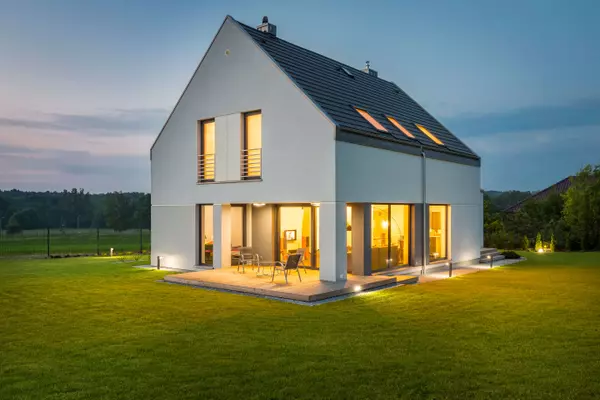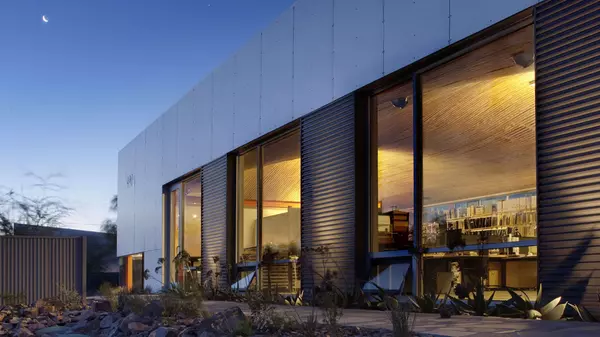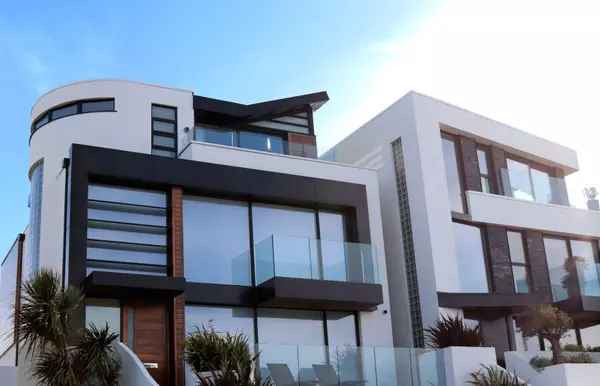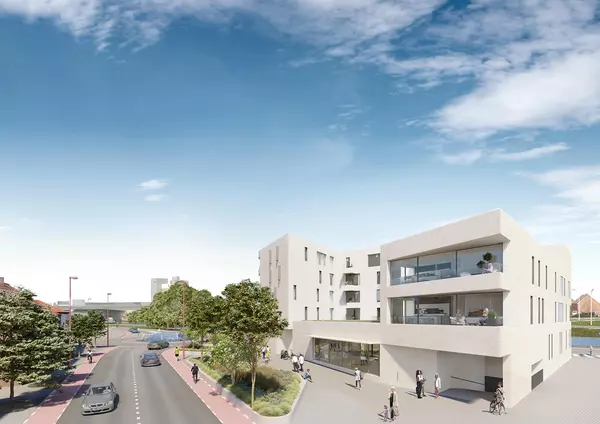Should a regional arena stay downtown? Henrico’s hunt for a new developer could give Richmond an opening
As Henrico gauges interest from developers in reviving its arena-anchored GreenCity project, some interest has already been shown to the city of Richmond in keeping a regional arena downtown – including by way of a potential rehab of the shuttered but still-standing Richmond Coliseum.
Officials familiar with the matter have told BizSense that Richmond has fielded inquiries from multiple parties about the prospect of building an arena in the city, or of renovating the Coliseum, since Henrico declared its original GreenCity developer in default of their agreements for the massive mixed-use development planned near Interstate 95 and Parham Road.
Henrico has since issued a request-for-interest solicitation to line up a new developer for the commercial portion of GreenCity. Responses to the RFI are due by July 28.
But with GreenCity paused, and with Richmond’s City Center plan to replace the Coliseum with a convention center hotel seemingly stagnant, there appears to be an opening for the city to reconsider whether it wants to remain the host for a regional arena.
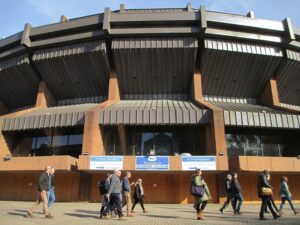
The 50-year-old Coliseum would make way for new development, including a 500-room convention center hotel.
When Henrico announced GreenCity five years ago in the wake of Navy Hill, another arena-anchored project by the same development team that would have replaced the Coliseum but was rejected by City Council, Richmond officials said the city would not compete with Henrico or try to keep an arena downtown. It contended that the region couldn’t support two arenas.
The city closed the Coliseum in 2019 due to safety concerns and costs associated with the aging structure, which is now a half-century old but to some observers still salvageable.
Now, with GreenCity in limbo following Henrico’s default declaration earlier this year, some observers have suggested that the City Center plan should be reworked to retain and revive the Coliseum.
The city is currently working with a consultant to reevaluate City Center and help move it forward, including potentially through a phased development approach. In addition to a 500-room convention center hotel, the 9-acre project is planned to include a mix of office, retail and housing development, as well as a rehab of the neighboring Blues Armory building.
Richmond Mayor Danny Avula confirmed to BizSense that at least one entity has approached the city about rehabbing the Coliseum, though he described the proposal as not fully-formed.
Avula said he’s open to hearing ideas about an arena in the city but supports Henrico’s efforts to build an arena in the county.
“I have never really been convinced that an arena is a good economic anchor without a pretty extensive investment of public dollars,” Avula said, adding that the city’s debt capacity to support such a project is currently stretched by other commitments such as the new ballpark and initial phase of the Diamond District development.
“If somebody were to bring a huge investment of private dollars and want to do it, I would certainly be all ears,” Avula said. “But in lieu of that, I’m happy for Henrico to continue pursuing it, and we will continue with our planning of the City Center area, which I think – stadium or no stadium – will be a very attractive place for development.”
Of rehabbing the Coliseum, Avula added: “There’s been one entity that has come to us to discuss that idea. It wasn’t very well baked, and the money source wasn’t very clear.
“We’re open to conversation, but until there’s a real offer that makes sense on the table, we’re going to continue pursuing our priority of building a convention center hotel to help support more traffic through the convention center.”
Even if a new 17,000-seat arena is built at GreenCity – a concept that Henrico has said it still believes in and supports – some observers argue that the Coliseum, which has 13,500 seats, could still be successful as a smaller-event venue.
A similar scenario played out a decade ago in Los Angeles, where a $100 million renovation restored and reopened the Los Angeles Forum, now called Kia Forum, which had closed years earlier after the L.A. Lakers basketball team moved to the newly built and larger Staples Center, now Crypto.com Arena. (Michael Hallmark, one of the developers behind GreenCity and Navy Hill, was a principal architect with the firm that designed Staples Center.)
Reopened in 2014, the Forum is now used as a concert venue and, with a capacity of up to 18,000, is the largest arena-sized venue in the U.S. dedicated to music and entertainment, according to its website.

A conceptual rendering shows the arena in relation to other buildings in the proposed GreenCity mixed-use development.
The arena planned for GreenCity has been projected to cost $250 million, a portion of which was to be financed with bonds that would be issued by one of two community development authorities that Henrico had established for the 200-acre project. Tax revenue generated from the larger development would be used to pay off the bonds, along with revenues generated from the arena.
While some say a similar revival could be pulled off for the Coliseum, the economics and financing for such a project are said to be only as important as whether there is political support for it from Richmond – particularly in light of the divided City Council vote that ultimately killed the Navy Hill plan in 2020. At the time, some councilmembers questioned whether the city needed an arena.
Councilmember Ellen Robertson, whose district includes the Coliseum and City Center area, was among those who voted in favor of Navy Hill. She said she would welcome and consider proposals to revitalize that part of downtown, which she described as sorely in need of it.
“I would love to see something done down there. It’s very disheartening to look at,” Robertson said.
“There are some that think that a smaller coliseum like what we have could be renovated. I’ve done renovation work myself, and I know that new construction is always a heck of a lot easier to do than renovation. I’m not sure that one is cheaper than the other,” she said. “The real deal is those venues are difficult to figure out….
“There’s reasons why we had such a hard time in trying to make it happen from the beginning (with Navy Hill), and then it going to Henrico and it seems as if they too are having some challenges to try to make these things work.” However, Robertson added, “We definitely would love to do something of that nature, in addition to what we’d like to see in the (City Center) plans.”
While she acknowledged having heard of interest in rehabbing the Coliseum, Robertson said what remains to be determined is the marketability of such a project, how much tax revenue it would generate and how much investment would be needed from the city.
Noting other high-dollar priorities such as the city’s combined sewer overflow (CSO) project and a potentially $300 million replacement of the city courthouse building, Robertson said, “The city does not have a lot of capital investment capacity right now…and we’ve got those big things that are in front of us and neither one of them generate revenue, but they are essentials that we must address.”
Nonetheless, Robertson added, “I know that there has been some conversation with some developers who are interested in rehabbing (the Coliseum), and we’re certainly open to having those conversations.”
Stephanie Lynch, who was among the council majority that voted down Navy Hill, likewise noted other investment needs currently facing the city that she said would make supporting an arena project challenging. She also pointed to the planning that has gone into redefining and positioning that area for economic development, sans an arena.
“I think we’ve had a lot of visioning for that area, and there certainly are a lot more possibilities than just a large-scale concert venue,” Lynch said. “I think it really comes back down to what does the community want. Obviously in 2020 the community said we don’t want a coliseum. We certainly don’t want to burden our taxpayers or have to shoulder the cost of a $350 million arena.
“I think the electorate would likely still be in that same place, particularly because since that time we’ve added (the ballpark) project, there’s a potential John Marshall courthouse that’s going to cost us $300 million, and now top of mind for the new administration is all the infrastructure and capital improvement project dollars that are needed to update our water facility infrastructure, and the CSO.”
However, if market demand for a new arena or Coliseum rehab can be shown, and if the right developer came to the table with a private equity-backed proposal, Lynch said that she and likely most of her council colleagues would be open to considering it, particularly in light of the city’s need for more revenue-generating tax base.
“It really does matter who’s at the table. If there are real, serious developers and investors that can with some rigor demonstrate that the numbers would bear out to be true, not just on the financing aspect but on the return on investment, I think maybe it’s worth consideration. But I still think we have to weigh that against all of the other projects that are on the hot-demand list,” Lynch said.
“The majority of council still remains intimately aware that the majority of our revenue cannot continue to be (residential) real estate taxpayers, for which accounts about 62 percent of the city’s revenue now. We know and are intimately familiar with the goal and the need to expand our economic development and generate revenue from other means than from our residential real estate tax base.”
Lynch added that the city’s focus should be less on one particular project and more on targeted growth for particular areas in town in ways that work for them, such as the growth nodes and small-area plans recommended in the city’s Richmond 300 master plan.
“I think we remain all set to go on responsible development. If we continue to double down on what works – like Scott’s Addition, Manchester, some of these growth node areas – we can really expand upon what we’ve done to enable that type of growth, and double-down and lean in on that from a budgetary-policy perspective, without having to do another huge, shiny project,” she said. “That’s not the only way to attract growth into an area.”
The post Should a regional arena stay downtown? Henrico’s hunt for a new developer could give Richmond an opening appeared first on Richmond BizSense.
Recent Posts
GET MORE INFORMATION

Agent | License ID: 0225209440







